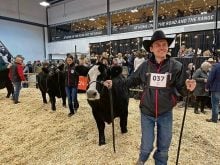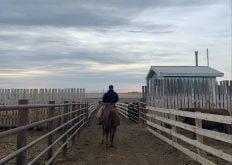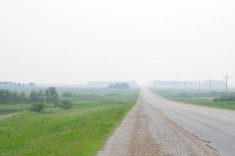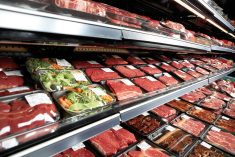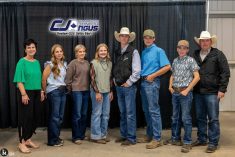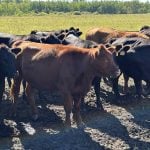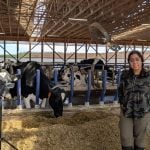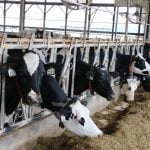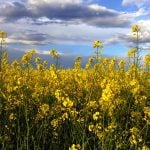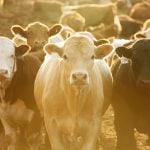A program that redirects surplus food from grocery stores to livestock aims to reduce feed waste while also educating livestock producers about safe feeding practices, says the program’s founder.
Loop Resource connects grocers with food banks and charities, as well as livestock producers, who use unsold food that grocers would otherwise chuck. Food waste may also be used for fuel or composted. Loop’s producers and charities divert 150 grocery store loads a day across Canada, says Jaime White, Loop founder.
Read Also

What to know before you go to Agribition 2025
If you’re attending Agribition 2025, this is the place to find out about tickets, dates and what’s happening this year.
Yet the program elicits some worry within the livestock industry, with visions of people feeding meat to pigs or cattle haunting producers who know how such practices can spread industry-devastating livestock diseases such as foot-and-mouth or African swine fever. White says those concerns about food separation and selection are built into the program at a core level.
“I think it’s important to know the Loop program is run by producers, so we all have a vested interest in this being very safe and we want it to work well for other farmers,” says White. White and his wife also have a small operation near Dawson Creek, B.C., where they raise goats, chickens, sheep, pigs and sport horses.
Stealth mission: Education
Part of Loop’s “stealth mission” is to educate producers about regulations and best practices for feeding livestock, says White. That means training in-person and on the phone to make sure Loop farmers are doing things the right way.
Most producers, especially those selling into conventional markets, stay abreast of best practices, he says. But small producers relatively new to farming and just starting to scale up may not be aware of the regulations and recommended feeding practices. Most of Loop’s farmers are operating on a smaller scale and White estimates about 30 to 40 per cent are first-generation producers.
The other vulnerable group includes older producers who have been carrying on with risky feeding practices for some time. These issues tend to come up during training or pre-training phone calls.
“I can’t tell you the number of times we’ve had a guy say, ‘Well, we’ve been raising hogs for a hundred years. We always throw the chicken carcasses in with the hogs,’” says White.

White says that they can then explain the reasons the regulations exist, and why they don’t want meat fed to livestock. “I’m not a regulator, so I’m not scary. I’m just another farmer. And that gives us a really unique platform to educate from.”
Any issues that initially arise during the in-person training will be followed up with training over the phone. They also watch for red flags during earlier phone interviews with potential program participants. Ultimately, though, Loop doesn’t want producers who refuse to comply with feed regulations in the program.
“We’ve improved our initial screening program to the point that our overall levels of noncompliance are very low because we tend to weed these guys out early, before they’ve even picked up a load.”
Loop will also boot farms from the program if the Canadian Food Inspection Agency (CFIA) brings them a concern. Other farmers can also report safety concerns anonymously to Loop and White says they’ll follow up through their quality assurance and tracing program.
Pushback on rule-breakers
In fact, Loop gets more reports about farmers who aren’t part of the program, White says. Typically, neighbours let Loop know about farmers who are sourcing food from a restaurant or grocer and feeding it incorrectly, in case they try to join the program, he explains. Generally, the reports indicate the neighbours will also be notifying the CFIA.

White says they are in contact with the CFIA “to ensure the program is tracking,” and that they’ve “worked very hard to reinforce the CFIA regulations and support the CFIA mandate across all of our operations.”
Loop doesn’t buy or sell feed products itself, so it’s not subject to livestock feed regulations, a CFIA spokesperson wrote via email. But, CFIA adds, “as an important part of the supply chain, Loop maintains lines of communication between buyers and sellers of these products intended for use as livestock feed, so that they can meet their regulatory obligations.”
Along with meeting regulatory requirements for recycled food, CFIA recommends that all parties involved in using food products as livestock feed weigh any food safety and animal disease risks. Livestock producers should “follow the biosecurity best practices suggested or required by their producer association,” the agency says.
White thinks that as they educate the farm community about feeding regulations, there’s more awareness and pushback on people who are breaking the rules. Nothing alienates a farmer more than someone being illogical and refusing to do a bit of work, he says. That practical ethic applies to regulations around feed, too.
“Not only are the rules simple, they’re logical.”
White says they welcome feedback. Readers with questions, ideas or concerns about Loop can email [email protected].
This is the first in a two-part series. You can read the second story here.




